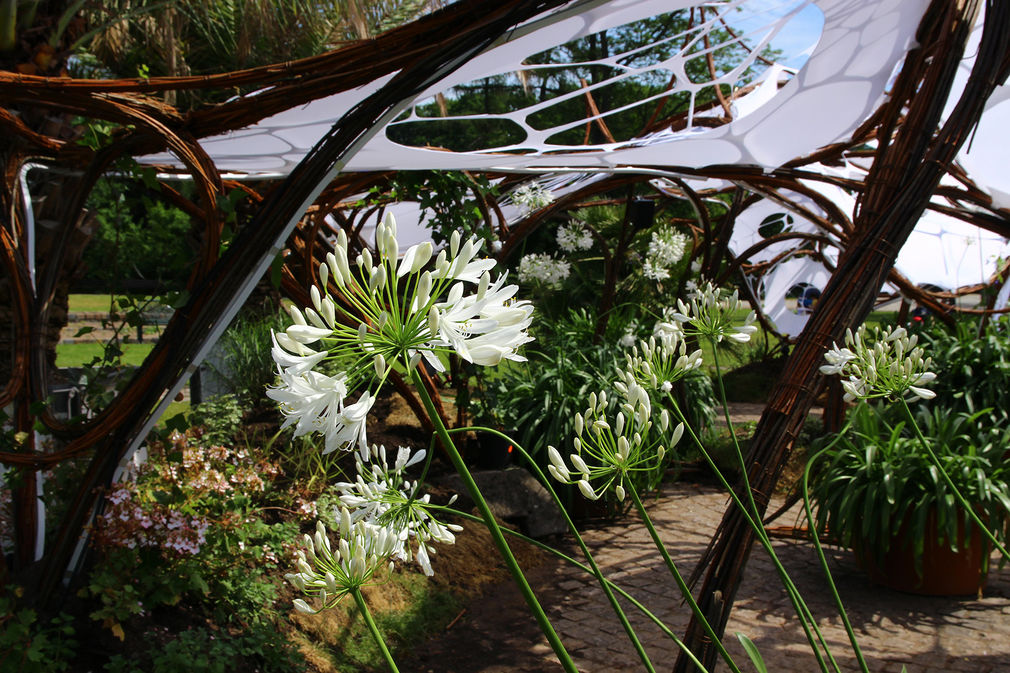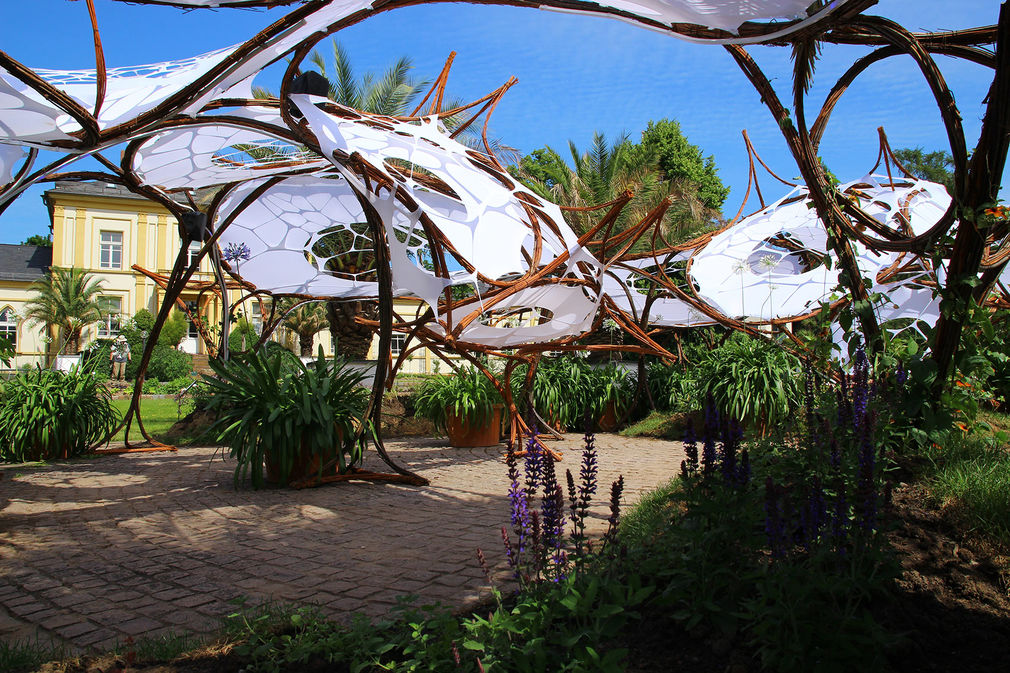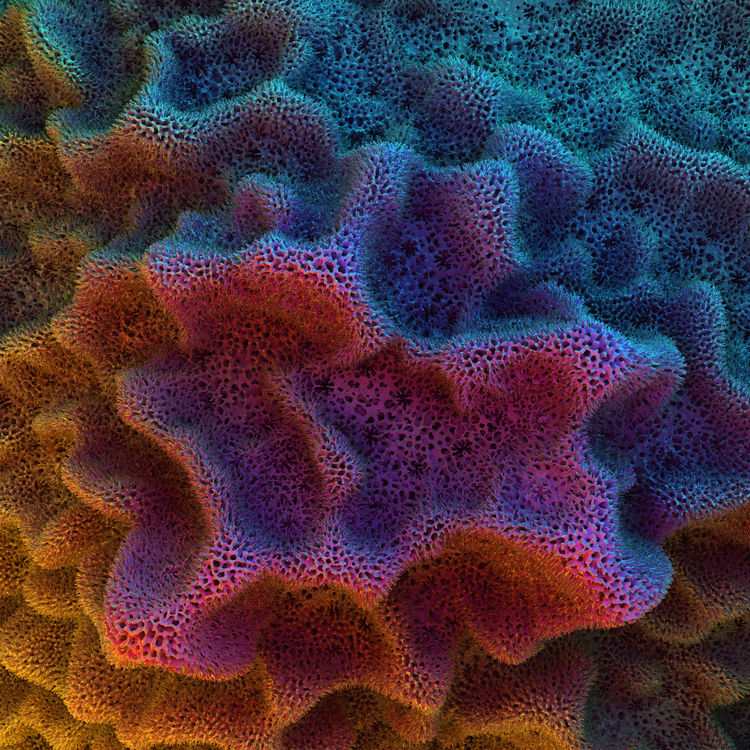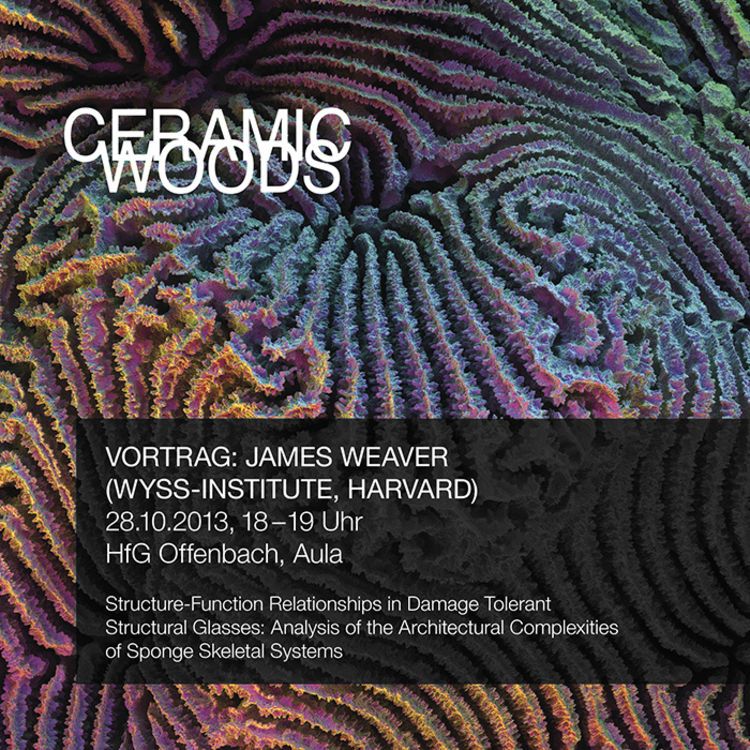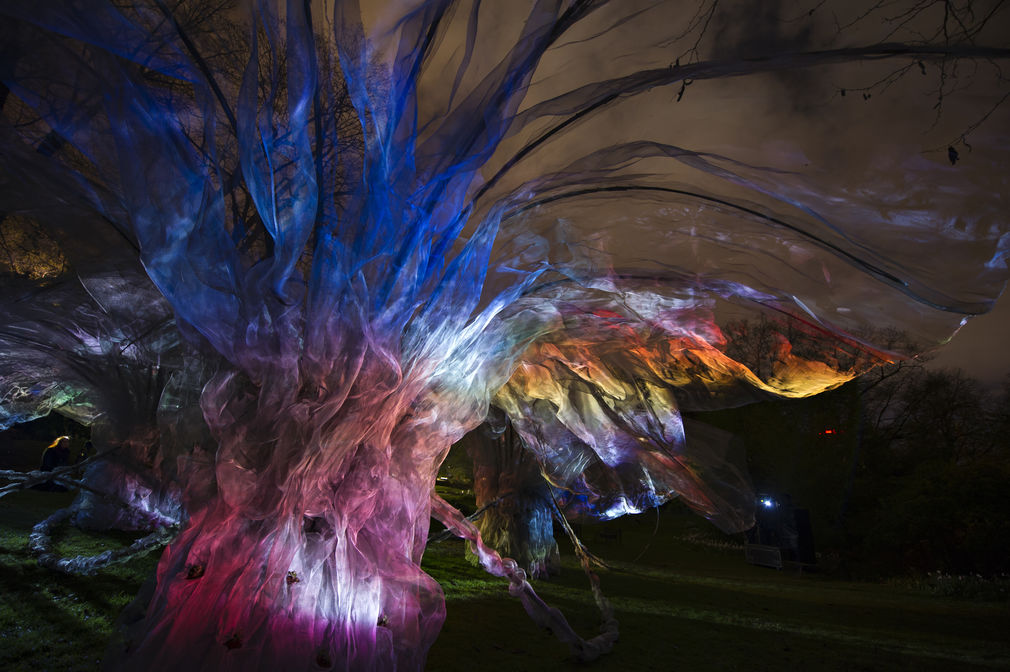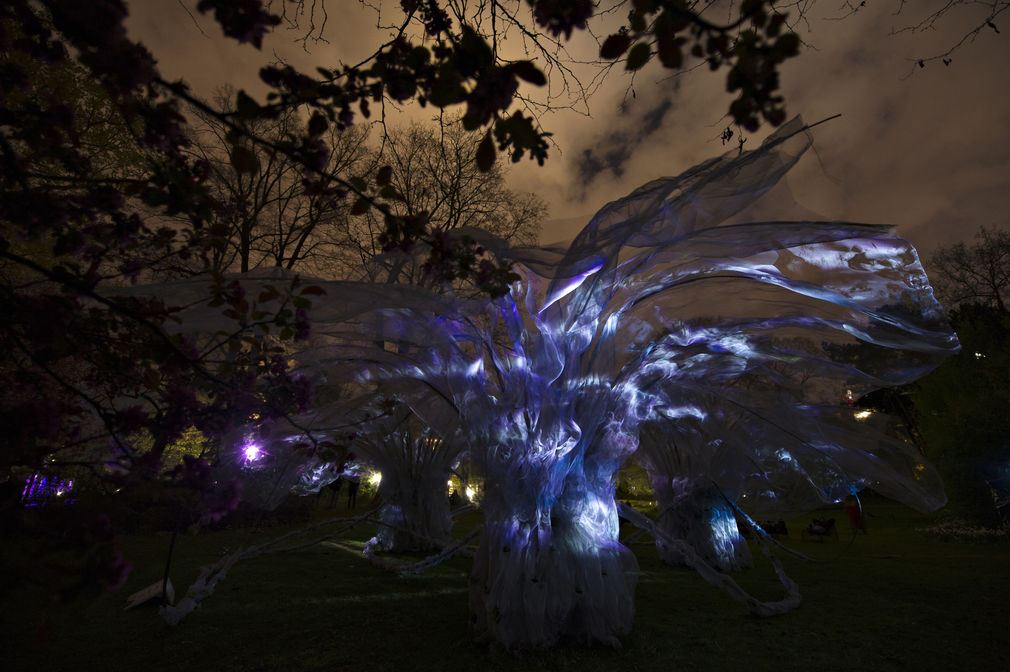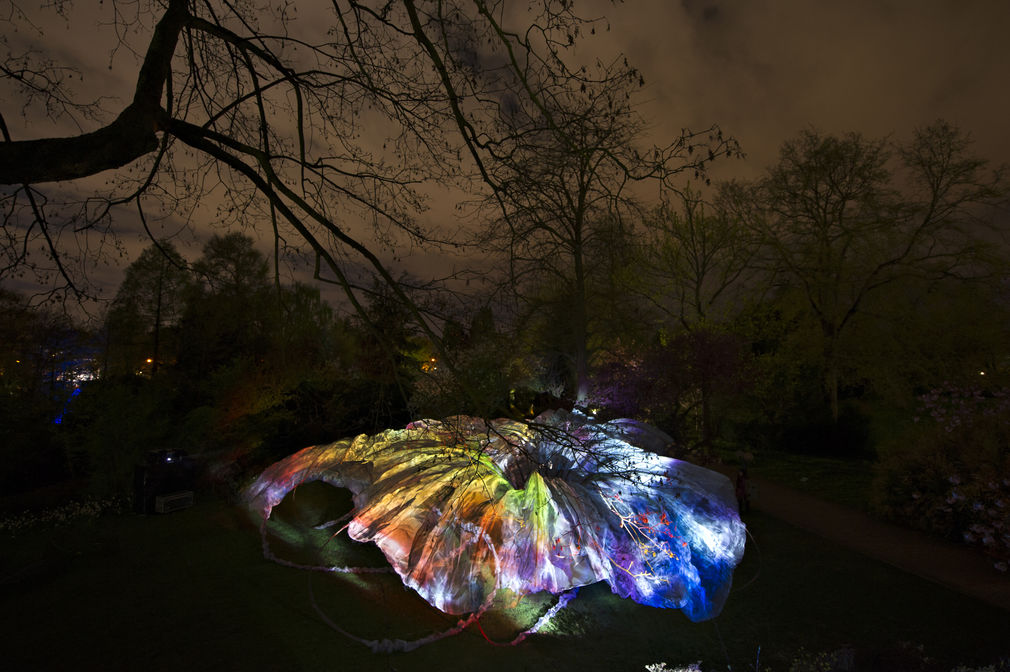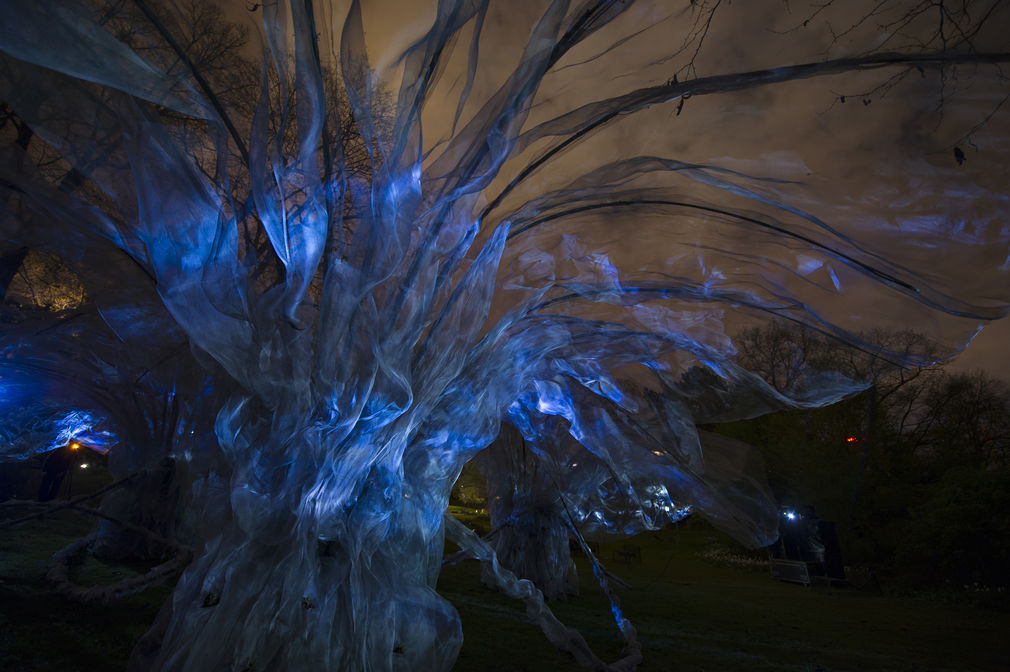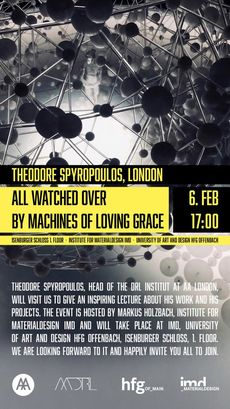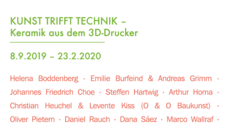Institute for Materialdesign IMD
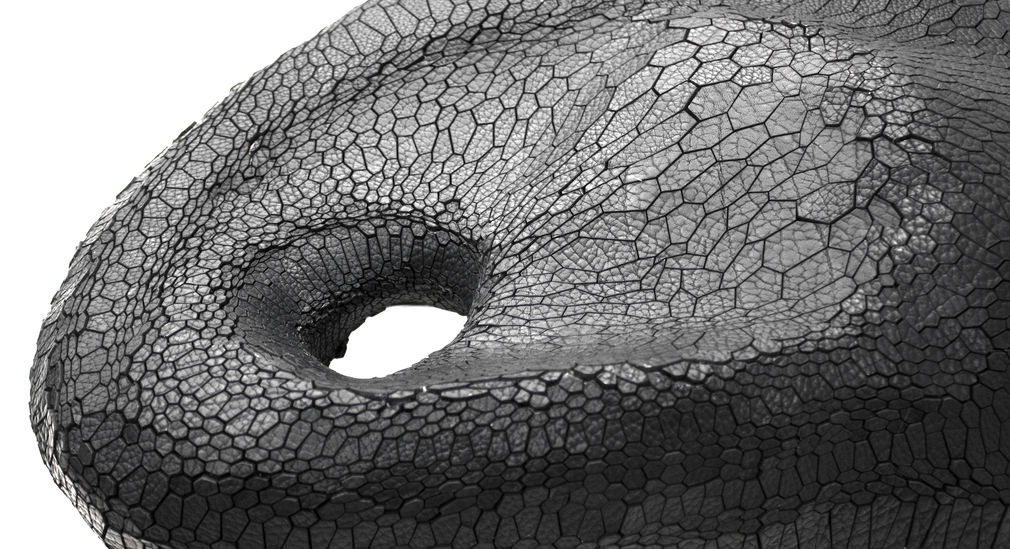
Parametic leather structure
Team
Dipl. Des.Valentin Brück
Research associate
Dr. Zhou Brück
Research associate
The Institute for Materialdesign IMD at HfG Offenbach is involved in the experimental intersecting of the design process with the diverse analogue and digital processes for materialization and form generation. Current technological developments have enabled the shift from the traditional material selection or material authenticity to the active and ongoing generation of forms and materials. Special attention is paid to the sometimes conflicting and contradictory processes and their inherent potential in a creative-scientific and interdisciplinary dialog. What impact do materialization and form generation have on the design process? How can a material be charged with digital, adaptive or interactive elements? It is at this intersection of design, materiality and form generation in particular that functional and formal potential and new conceptual and contextual integration are stimulated.
At the IMD, teaching and research activities on material-based and form design are tied in with the context of an experimental and interdisciplinary program in the Basic and Advanced Courses as well as the doctoral program. Rather than a purely dogmatic approach, the aim is a pluralist interaction of a wide range of analogue and digital processes for the generation of forms and the materialization of three-dimensional objects. Here, experimentation, examination and research are often focused on materials, structures and systems and adaptive, interactive and dynamic processes. In addition, the interlacing of nature and artefact as well as the integration of physically, chemically and biologically inspired processes in design play an increasingly important role.
Form generation
At the IMD, the term ‘form generation’ is used to describe a design process that utilizes analogue and digital tools and processes and their reciprocal hybrids. This does not inevitably need to result in finding a form for an object to be designed. Often, the focus is rather on processes concerning the generation or finding of forms and on self-organization. Along with traditional analogue design methods, in particular computer-based, generative design practices and processes for the generation of forms are integrated. Important material parameters are directly embedded in the form generation process.
This gives rise to either digital form generation strategies directly integrating material parameters, or charged materials that lead to adaptive, interactive or dynamic user-object-environment interactions. At present digital surfaces are increasingly being materially charged and undergoing »re-analogization«. As such, by means of their interaction diverse disciplines and technological contexts are giving rise to completely new hybrids of form generation and materialization.
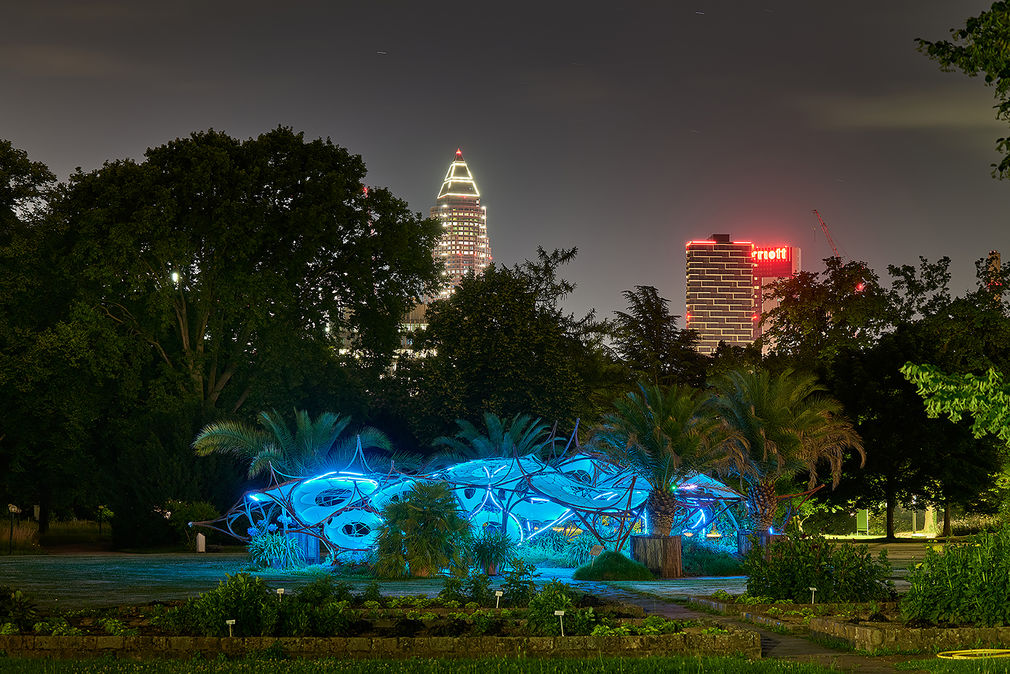
Partners
Cooperation and project partners
- Politecnico di Milano
- TU Delft
- AA London
- ABK Stuttgart
- ILEK, University Stuttgart
- BU Wuppertal
- TU Eindhoven
- HS Koblenz
- FH Frankfurt
- EVO Offenbach
- Senckenberg Naturkundemuseum Frankfurt
- Hyundai
- BASF
- EVONIK
- Fraunhofer Institut
- Saint Gobain
- Airbag Craftworks
- Stadt Koblenz
- Palmengarten Frankfurt
Projects
imd_ plant transistor
Anlässlich des 150-jährigen Palmengartenjubiläums haben sich Gestalter_innen und Künstler_innen der HfG Offenbach mit dem Palmengarten und seinen »Transformationen« im Wandel der Zeit auseinandergesetzt. Studierende des Instituts für Materialdesign IMD gestalteten hierfür einen Pavillon, der die Bedeutung des Palmengartens als Begegnungsort zwischen Pflanze, Natur und Mensch beinhaltet. Dabei steht vor allem der symbiotische Dialog von Natur und Kultur im Fokus.
Die Grundstruktur des Pavillons baut auf der natürlichen Form der Fibonacci-Folge auf und wird in ihrer Logik zu einer architektonischen Raumstruktur weitergedacht. Gebündelte Weidenruten bilden dabei die offene Grundstruktur, die mit einer weißen mehrlagigen Textil-Membran überspannt ist und so eine ganz eigene Raumatmosphäre erzeugt. Der Pavillon ist sowohl von Innen als auch von Außen mit Pflanzen bewachsen, die im Laufe der Zeit den Pavillon als Artefakt vollkommen überwuchern und übernehmen. Anhand einer Sound- und Lichtinstallation lässt sich während dieser Interaktion zwischen Natur und Kultur eine Brücke zur Technik schlagen. Durch eine an die Pflanzen angebrachte Sensorik werden Impulse gemessen und ihre Interaktionen und Reaktionen mit der Umgebung in ein Sound- und Lichtbild transformiert.
Es entsteht eine auditiv und visuell wahrnehmbare Atmosphäre, die interaktiv auf die Besucher_innen reagiert. Zeitgleich wird das von Kommunikation und Reaktionen geprägte verborgene Netzwerk der Pflanzen veranschaulicht. Somit wird der »imd_plant transistor« selbst zu einem experimentellen Forschungsbiotop.
Betreuung
Prof. Dr.-Ing. Arch. Markus Holzbach, Dipl.-Des. Valentin Brück
Teilnehmer_innen
Lisa Bartz, Kira Bernauer, Sophie Bernauer, Johannes Bietz, Till Eser, Lucas Glittenberg, Noa Haller, Nina Jäcker, Lennard Ludig, Zachary Mentzos, Leonard Neunzerling, Josephine Pavesi, Daniel Wolff
Besonderer Dank an
das Palmengarten-Team, Stephan Blanché, Michael Langsdorf, Adrian Kitzinger, Robert Langer
Institut für Materialdesign
an der Hochschule für Gestaltung Offenbach
Instagram: @imdmaterialdesign
11. Juni bis 31. Oktober 2021
Palmengarten
Siesmayerstraße 61
60323 Frankfurt am Main
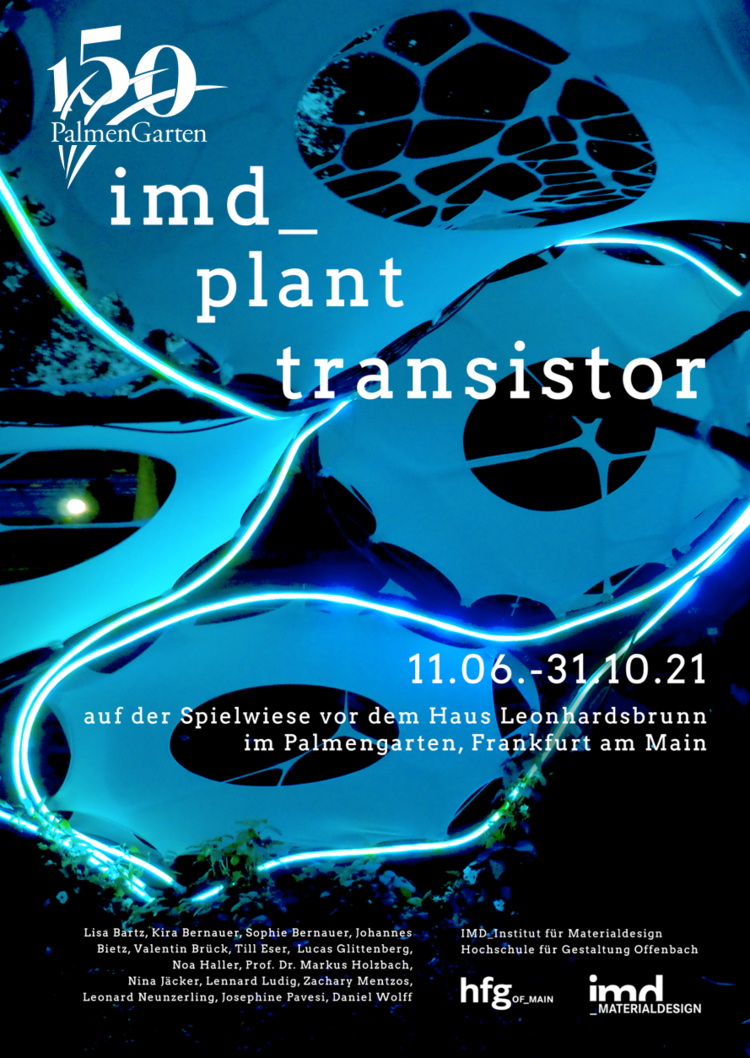
Exkursion an die Aalto University in Helsinki, Finnland
Im Wintersemester 2017/18 fand das Semesterprojekt »Silicate« statt, an dem Studierende aus den beiden Fachbereichen Design und Kunst teilnahmen. Zum Ende des Semesterprojekts ging es vom 10. bis 15. Februar 2018 auf Einladung von Prof. Dr. Maarit Mäkelä auf eine Semesterabschlussexkursion zur Aalto Universität in Helsinki, Finnland. Die Aalto Universität ist die größte Universität in Finnland und hat derzeit rund 20.000 Studierende. An der vom IMD besuchten Fakultät werden die Fächer Architektur, Design und Kunst angeboten, die große Campusuniversität bietet aber auch die Möglichkeit, beispielsweise Ingenieurwissenschaften oder Wirtschaft zu studieren. Die Aalto Universität verfügt zudem über eine große Keramiktradition. Die HfG-Studierenden stellten ihre Semesterergebnisse aus dem Projekt »Silicate« in einer gemeinsamen Workshopveranstaltung mit Lehrenden der Aalto Universität vor. Es fanden Vorträge und ein weiterer Workshop zum Thema »Clay« statt.
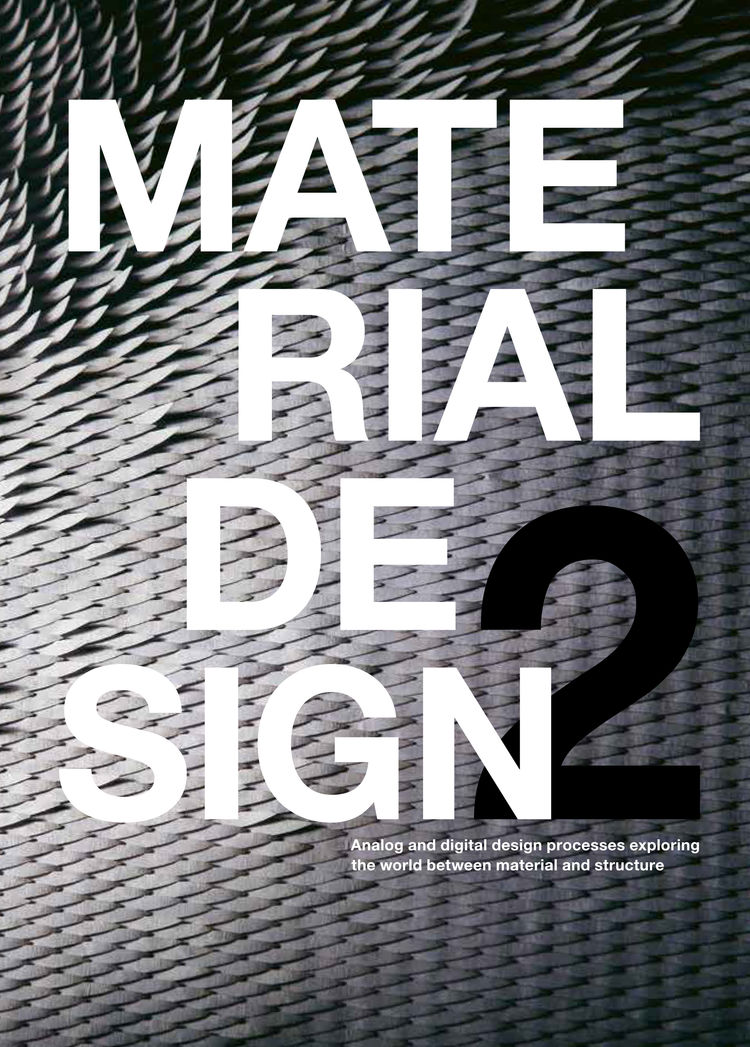
Materialdesign 2
The catalog was designed by Nadine Auth and Aeneas Stankowski and is available through the university library (bibliothek@hfg-offenbach.de).
ISBN: 978-3-945365-02-1
Materialdesign 2
Prof. Markus Holzbach and his team from Institute for Materialdesign IMD of the School of Design at the HfG Offenbach, University of Art and Design exhibits research works during the Salone del Mobili 2015 in Milan.
Analog and digital design processes combining material and structure
The Institute for Materialdesign IMD understands itself as a hub for inspiration – analog and digital methods are combined to create cross-material innovations. Ideas are frequently generated through the characteristics of the material itself, its qualities and its possibilities as well as its limits. Through the speculative combination of materials, transferring traditional processes of fabrication into innovative contexts, surprising results are achieved. Implementing randomization into the research establishes various remarkable starting points for the design process. The experimental approach and freedom of creative research is a characteristic of the IMD's approach to teaching. Here, research-driven projects stand alongside object-related product design. Many of the works exhibited address the relation between man and material. The extended understanding of the material shifts toward the role of the actual object. This new role of materials also comprises the intersection of nature and artifact. Materials are brought to life through layering and combining natural and synthetic elements and blending in digital techniques. The borders of perception are erased and the material itself is redefined. Designing with materials creates a new context between art and science. Material-centred design opens up the field of design to new possibilities and creates a broad space of conceivable tasks.
Involved designer
Lilian Dedio, Andreas Hildebrand, Florian Hundt, Alix Huschka, Frédéric Kreutzer, Jan-Simon Maibaum, Markus Mau, Anna-Lena Moeckl, Martin Pohlmann, Nico Reinhardt, Julian Schwarze, Aeneas Stankowski, Johannes Wöhrlin
Curated by
Prof. Markus Holzbach
Sponsored by
BMW, Evonik Industries, freunde der hfg e.v., WZR ceramic solutions GmbH
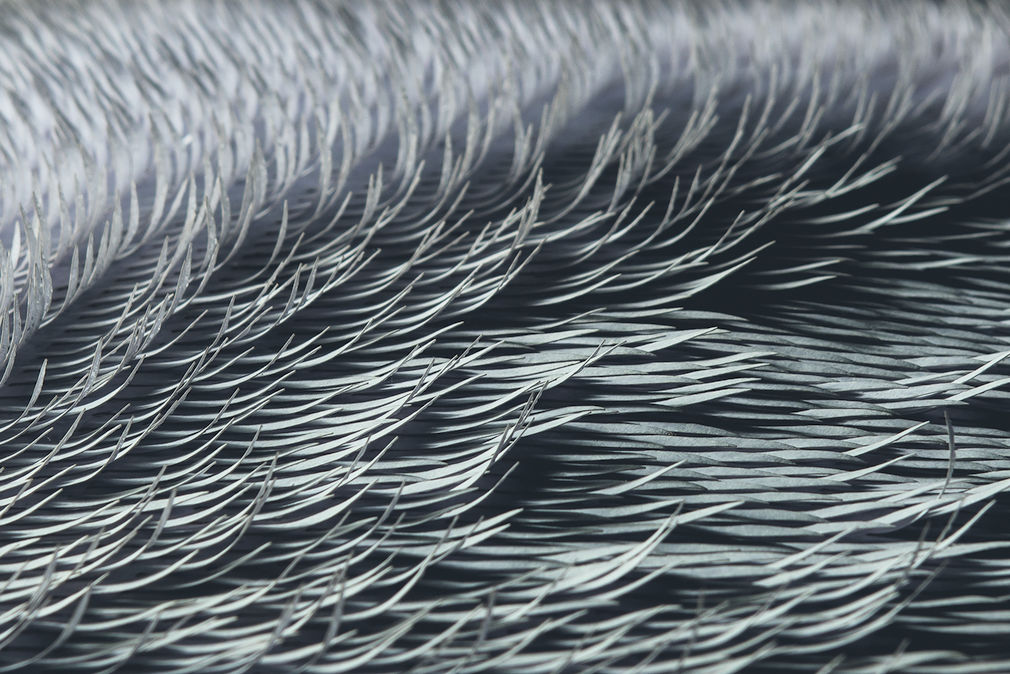
Transformative Paper
The project is a layered structure, which reacts to short-term environmental conditions, morphing into various states.
In cooperation with BMW AG
Florian Hundt
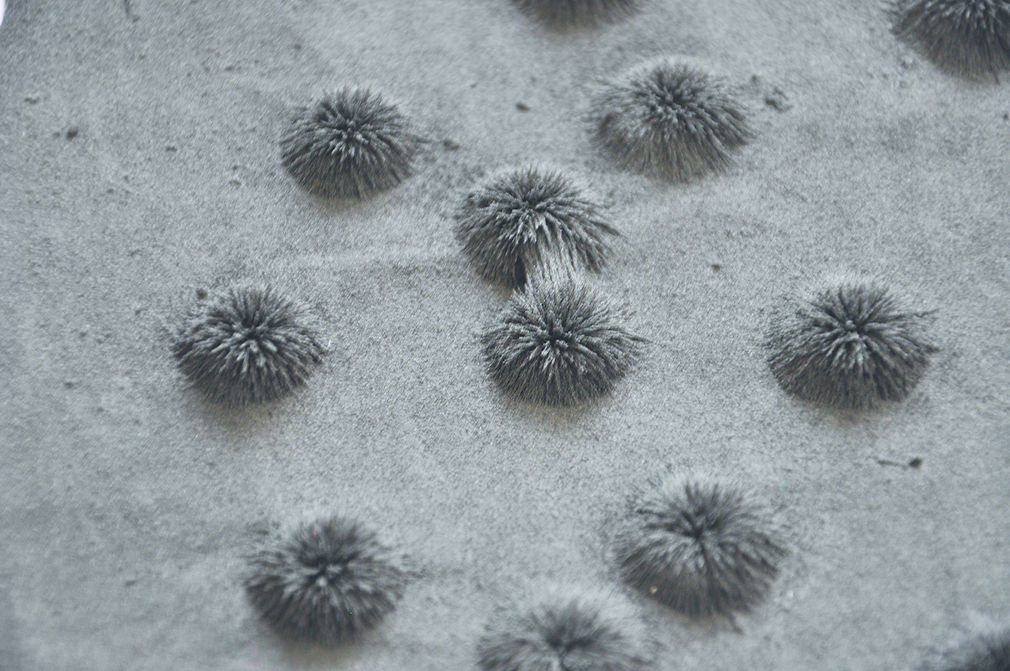
Magnetic Fabrics
The combination of methodically arranged magnetically active and passive components causes a mechanical accumulation of elements and thus a dynamic rearrangement of the entire medium.
In cooperation with BMW AG
Lilian Dedio
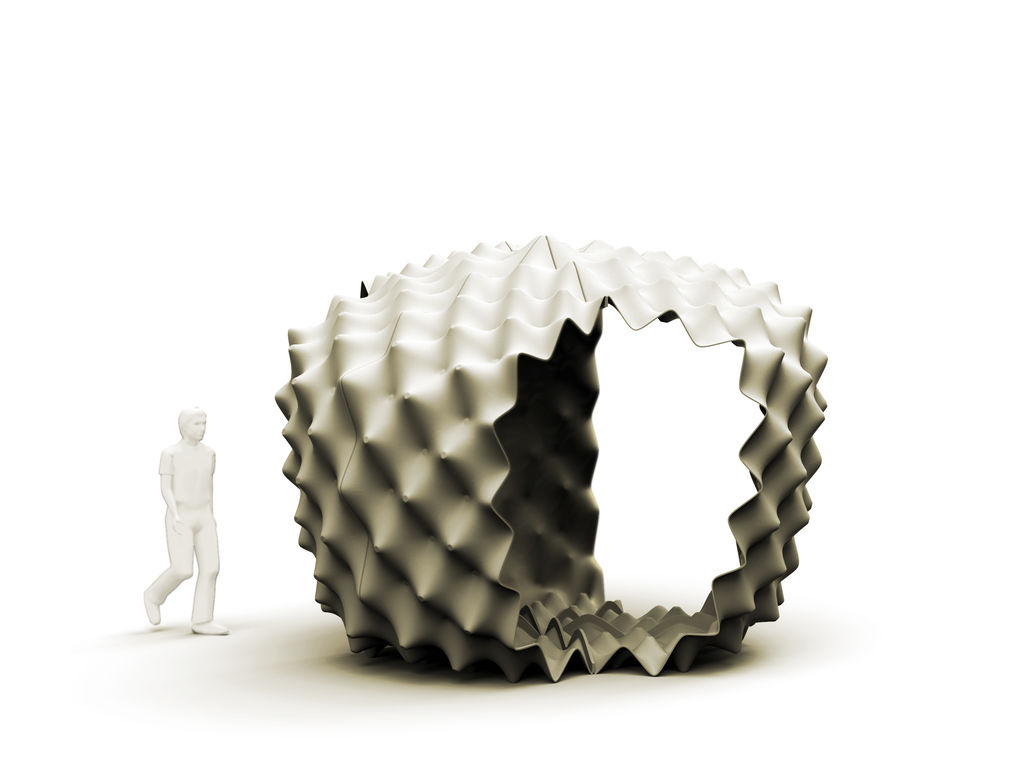
Forschungspavillon
The pavilion consisting of six thin shell elements is the result of a research project. The material-centred design process can be seen as an exemplary contribution to design science.
Nico Reinhardt
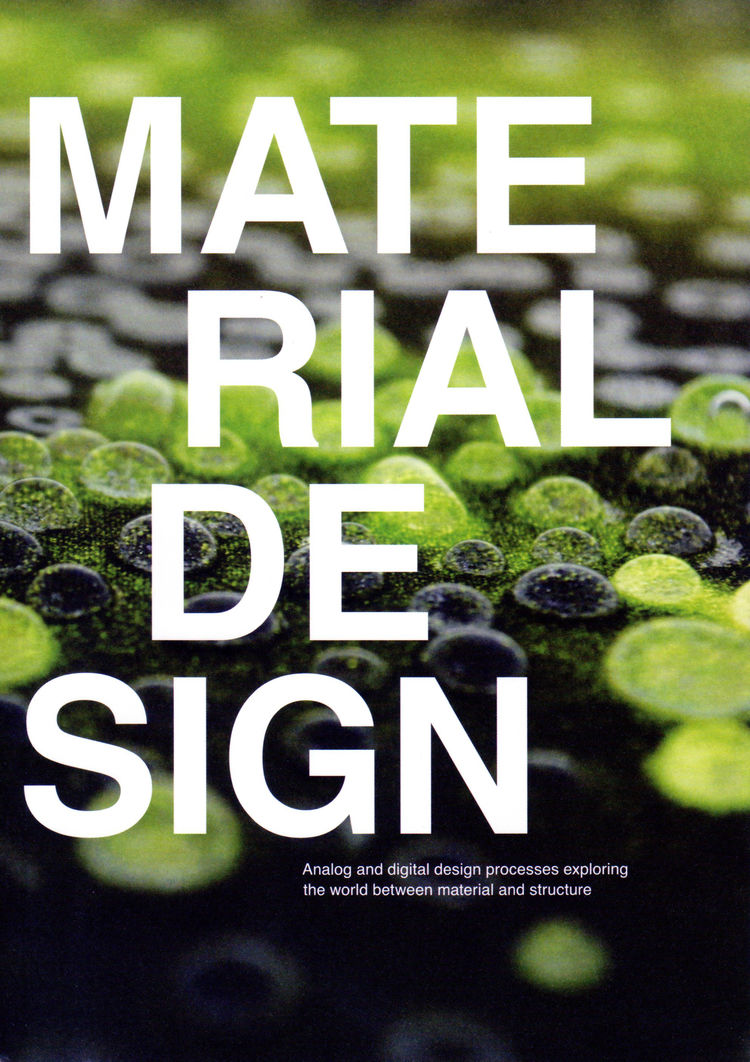
Material Design
The catalog for the Ventura Academies exhibition during the Salone del Mobile in Milan was designed by Nadine Auth and Claire Wildenhues with the Field of Teaching Material Design and is available through the university library (bibliothek@hfg-offenbach.de).
ISBN: 978-3-921997-98-7
Materialdesign
In the context of the accompanying program to the Milan Furniture Fair (April 8-13, 2014) students of the Field of Teaching Material Design presented material projects and exhibits in the exhibition district Ventura Lambrate (link). The Milan Furniture Fair is the largest international fair of its kind and attracts some 350,000 visitors every year. Numerous special exhibitions and showroom presentations in Milan’s various districts attract up to 500,000 visitors. HfG Offenbach’s »Material Design« show was presented alongside other universities from around the world under the title »Ventura Academies« in an industrial hall at Via Privata Oslavia 7.
The world of materials and structures, form and design exerts a fascination all of its own. The exhibition’s aim was to give visitors to the Milan Furniture Fair an impression of this fascination.
Many of the student projects on show came about through playful exploration and also involved unconventional approaches. Not only was the emphasis on getting to know materials, structures and systems, but also technical-physical or chemical properties and a sense for sensory properties. Often ideas evolved from an experimental and physical exploration of materials and three-dimensionality. Otl Aicher talks in this context of understanding and grasping things.
Apart from digital design and manufacturing tools, contemporary design is also decisively influenced by materiality. Only though their materialization do our ideas and design intentions become understandable. Materials with sensitive, smart or gradually varying properties lead to new and complex design ideas, which open up unimagined options with regard to concept, form, structure and surface. This paves the way from static to dynamic, process-oriented properties. Creativity and design are part of an industrial value-added and moreover an important cultural task. Mateo Kries, Director of the Vitra Design Museum, recently wrote: »Today, museums have to treat design as what it is – as a crossover discipline between art, science and technology.«
Participating students
Nadine Auth, Joong-Youn Cho, Raffael Costa, Lilian Dedio, Timothy Ekins, Anna Michèle Hamann, Florian Hundt, Alix Huschka, Steven Kaufmann, Marlies Kolodziey, Frederic Kreutzer, Markus Mau, Marianne Pforte, Martin Pohlmann, Ricardo Ponce, Julian Schwarze, Friedrich Söllner, Chi Sohns, Marc-Samuel Ulm, Claire Wildenhues, Johannes Wöhrlin, Benjamin Würkner
Curated by
Prof. Markus Holzbach, Prof. Petra Kellner
Sponsored by
Hyundai, BASF designfabrik, TechnologieTransferNetzwerk Hessen
Hydro Lighting Surface
Membrane construction, which thanks to material transformations and local layering is lent differing functions, and as a result produces an interaction between various fluids and the membrane.
Alix Huschka
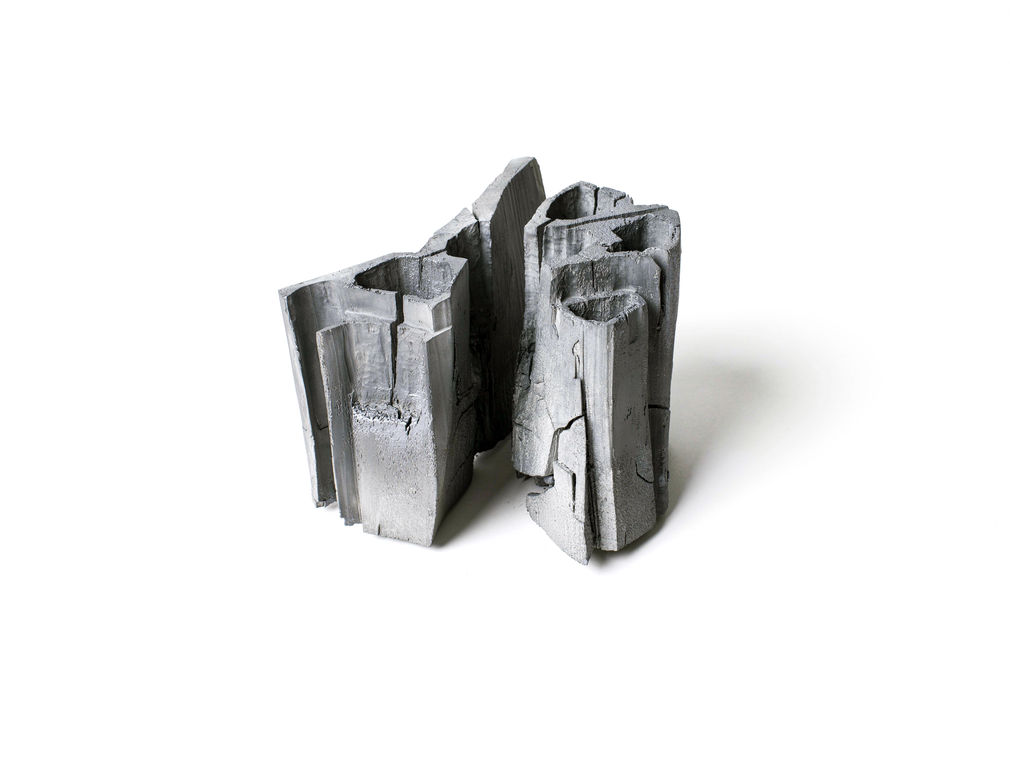
Ceramic Woods
The wooden ceramics are the result of a design process inspired by the materials, which essentially explores the question of the composition of natural and synthetic material properties.
Group project
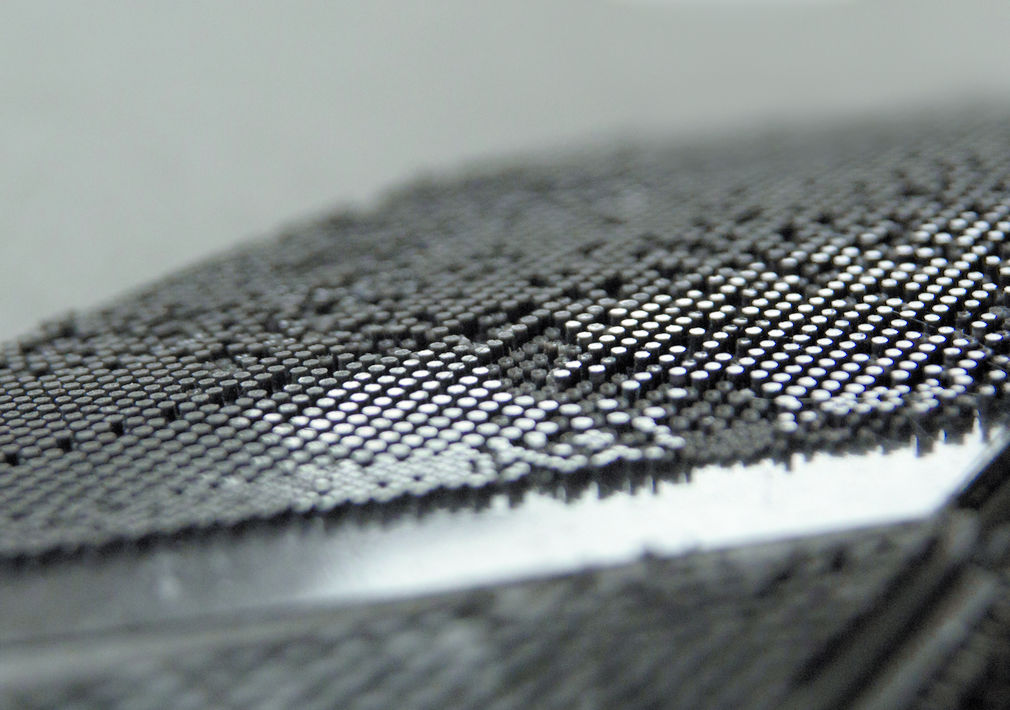
Tactio
consists of a multi-layer microstructure, which generates a sense of intensified touch and pressure between the object surface and the hand, and consequently strongly influences interaction between man and object.
Marlies Kolodziey
Bio-Materialization/Ceramic Woods
James Weaver (Wyss Institute, Harvard)
Lecture
November 28, 2013
Structure-Function Relationships in Damage Tolerant Structural Glasses: Analysis of the Architectural Complexities of Sponge Skeletal Systems
Exhibition
November 28 to 31, 2013
Isenburger Schloss, 1st floor
Works and SEM images from the seminar “Substitution-biomorphic SiC ceramics” from summer semester 2013 and large-format color electron microscope images of biogenic ceramics (corals), partly in 3D (James Weaver)
Organizers
Prof. Markus Holzbach
Prof. Werner Lorke
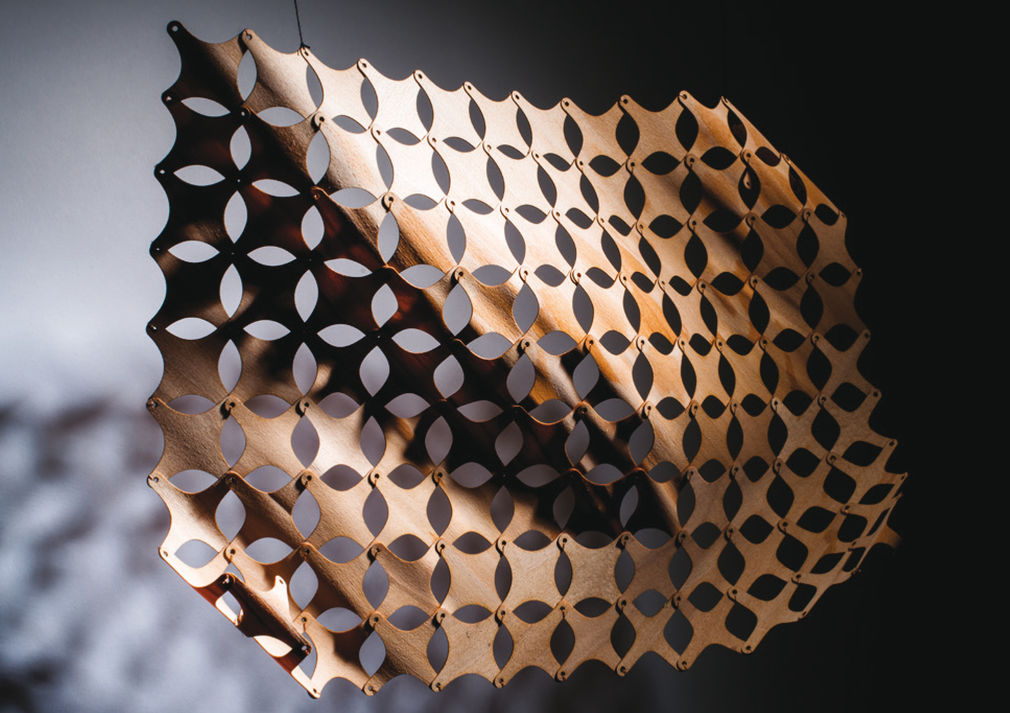
Anisotrop
Florian Hundt
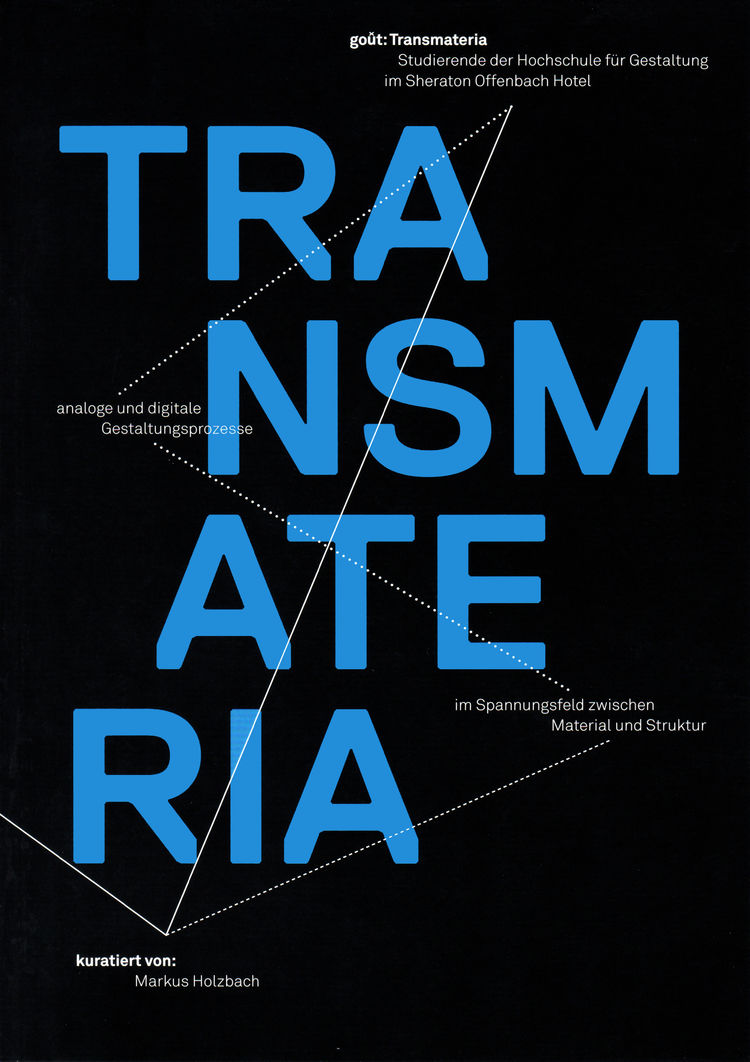
Transmateria
The accompanying catalog for the gout exhibition is available through the university library (bibliothek@hfg-offenbach.de)
ISBN: 978-3-921997-98-7
Transmateria – Analogue and digital design processes at the interface of material and structure
gout exhibition at the Sheraton Offenbach Hotel
The exhibition »Transmateria – Analogue and digital design processes at the interface of material and structure« marked the ninth cooperation between HfG Offenbach and the Sheraton Offenbach Hotel. From November 7, 2013 to September 30, 2014 the hotel was transformed into an exhibition space once more. For the first time, projects, designs and presentations from the Product Design Department were showcased.
The exhibition showed design processes characterized by their immediate proximity to the material and that explore the nature, properties, possibilities and limitations of material. The surprising combination of materials and recontextualization of the familiar produced a range of inspiring stimuli for design. But that was not all. The creative approach to, say, wood and plant fibers, traditional industrial materials such as metals and plastics and completely new materials produced results that have a highly individual sensory power and particularly artistic aesthetic.
Participating students
Vasiliki Corakas, Karl Becker, Lilian Dedio, Timothy Ekins, Aldo Freund, Anna-Michele Hamann, Alix Huschka, Steven Kaufmann, Philip Kliem, Annalena Kluge, Marlies Kolodziey, Teresa Mendler, Marianne Pforte, Sophia Polywka, Steffen Reiter, Chi Sohns, Marc-Samuel Ulm, Barbara Wildung, Johannes Wöhrlin, Benjamin Würkner, Xiaojia Yao, Studierende der Grundlagen Produktgestaltung unter der Leitung von Prof. Petra Kellner und Prof. Peter Eckart und in Zusammenarbeit mit Andreas Klober
Curated by
Prof. Dr. Markus Holzbach
Dipl. Des. Nico Reinhardt
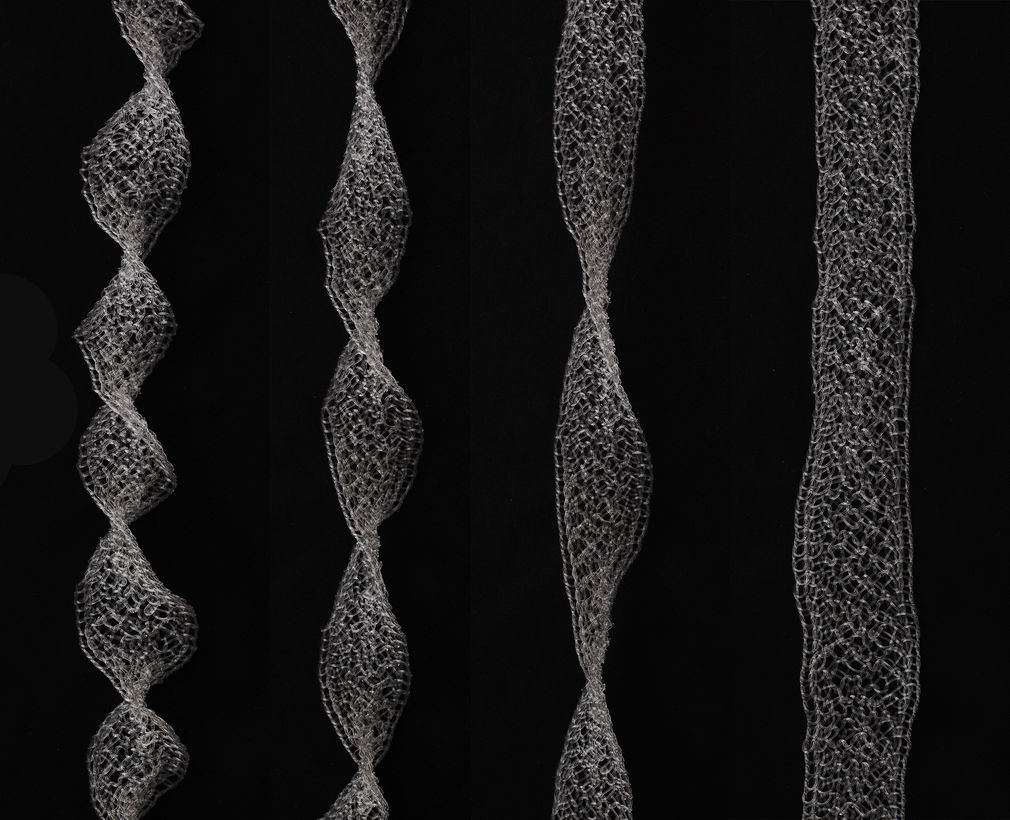
Transtextil
Marianne Pforte
Engelstrompete (Angel’s Trumpet)
Realized in Frankfurt’s Palmengarten during Luminale 2012
Concept of renewable raw materials
The design is based on the idea of processing a renewable regional raw material in an innovative manner and combining it with a modern material to create a completely new three-dimensional object. The pavilion – a lightweight load-bearing slab structure – consists of a delicate load-bearing structure of regional timbers and a translucent membrane. In combination, the materials form a harmonious whole that interprets the idea of sustainability in a pioneering manner and lends poetic expression to the technical element.
Temporary, mobile and sustainable
The pavilion can be quickly and easily erected and disassembled or transported thanks to its modular structure. Moreover, the pavilion is completely recyclable: All the materials used can easily be recycled separately; no harmful compounds are used or produced.
Inspiration
The blossom of the angel’s trumpet provided the inspiration for the pavilion. Seen as an abstract form, it opens up a wide range of creative options. The blossom has five characteristic tips, which are reflected in the pavilion by five basic structural elements. In all, the pavilion is made up of 15 elements. Their spatial arrangement gives rise to interesting overlayerings and interstices, blurring the difference between inside and outside.
Projection and sound
The pavilion is conceived as analogous to a living organism that responds to its environment and communicates with it visually and acoustically. The translucent membrane forms the skin between the wooden leaf ribs and simultaneously serves as a reflective surface or space for video projections. Moving forms and changing colors underline the similarity to a living organism. This visual level is accompanied by a sound space, which was conceived and realized by Dominik Eulberg. Not only is he an internationally successful ornithologist, but he is also famous for his rave music. He is an artist who, like the angel’s trumpet, combines nature and technology in a special way: natural sounds are the raw material for his electronic music.
Concept, design, realization and assembly
Aldo Freund, Philip Kliem, Barbara Wildung, Benjamin Würkner
Sound concept and realization
Dominik Eulberg
Projection
Paul Heyduck, Raoul Wilken
Assembly
Nikita Bagdulin, Patrick König, Sarah Lilienthal, Martin Pohlmann, Nico Reinhardt
Supervision
Prof. Markus Holzbach
With the kind support of
Dominik Eulberg, sonosfera, satis & fy, Palmengarten Frankfurt, Gründach e.K., Rauch, GazeShop.de, Bagger Born GmbH
Calendar
8 September 2019 until 6 February 2020Art meets Technology - Ceramics from the 3D Printer
until 23 FebruaryNews
Als Kunsthochschule des Landes Hessen praktiziert die HfG Offenbach eine zeitgenössische und zukunftsorientierte Lehre, die durch einen vielfältigen Austausch zwischen den freien, den angewandten und den theoretischen Fachgebieten gekennzeichnet ist. Die HfG hat zwei...
Exhibition »Materialdesign«
Prof. Markus Holzbach and his team from Institute for Materialdesign IMD of the Faculty of Product Design at the HfG Offenbach, University of Art and Design exhibits research works during the Salone del Mobili in Milan.
